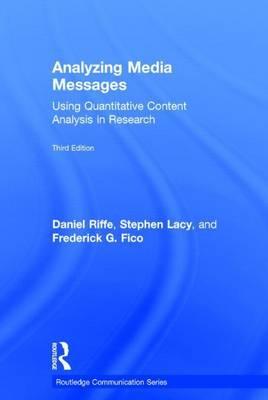Routledge Communication
1 primary work • 4 total works
Book 10
Media Management
by Stephen Lacy, Jan LeBlanc Wicks, George Sylvie, Angela Powers, and Ardyth Broadric Sohn
Published 1 February 1993
This book grew out of the collective needs of media management scholars to explore the theory and practice of the field through case analysis. Although research studies exist in several different scholarly journals, and applicable cases are available through various sources, this work represents one of the first efforts to combine the broad concerns of the field with relevant cases. Approaching media management as a decision-making process, this book provides a framework and materials for analysis, discussion and problem solving within various media such as ad agencies, cable companies, magazines, newspapers and broadcasting stations. All cases, however, are designed to illuminate not only the differences present in management environments but the similarities between media companies. 48 short cases and three extended cases allow students to apply what they learn from reading and class discussions to situations faced by media managers.
The book's goals are:
* to provide access to a seldom-used approach to discussing media management
* to supplement currently available materials concerning issues relevant to managing a media organization.
Practice in evaluative and descriptive analyses is provided, which seeks to suggest questions for individual research as well as more formal classroom debate and discussion. Original cases researched and written by the authors -- former managers and/or employees in media organizations -- are included throughout this volume.
The book's goals are:
* to provide access to a seldom-used approach to discussing media management
* to supplement currently available materials concerning issues relevant to managing a media organization.
Practice in evaluative and descriptive analyses is provided, which seeks to suggest questions for individual research as well as more formal classroom debate and discussion. Original cases researched and written by the authors -- former managers and/or employees in media organizations -- are included throughout this volume.
Analyzing Media Messages
by Daniel Riff, Daniel Riffe, Stephen Lacy, Frederick Fico, and Frederick G. Fico
Published 1 July 1998
This is the first complete text on quantitative content analysis since Krippendorf's Content Analysis (1981). Analyzing Media Messages incorporates content analysis research since 1981, including a series of sampling studies conducted by the authors. As it has evolved, the field of communication research has seen a variety of theoretical perspectives that influence how scholars define research questions and the methods they use to answer those questions. The focus of their research has often been communication content. Scholars have examined content because it is often assumed to be the cause of particular effects, and because it reflects the antecedent context or process of its production. Content analysis has been used in mass communication and in other fields to describe content and to test theory-derived hypotheses. The variety of applications may be limited only by the analyst's imagination, theory, and resources, as is shown in examples throughout this book.
Rich with examples of recent and classic applications, this volume is designed to serve as a primer in the technique of systematic, quantitative analysis of communication content. It explains solutions to practical problems confronted by the content analysts, and also examines the role of computers in content analysis. The text is written so that students can readily understand and apply this method.
Rich with examples of recent and classic applications, this volume is designed to serve as a primer in the technique of systematic, quantitative analysis of communication content. It explains solutions to practical problems confronted by the content analysts, and also examines the role of computers in content analysis. The text is written so that students can readily understand and apply this method.
Time, Change, and the American Newspaper
by George Sylvie and Patricia Dennis Witherspoon
Published 1 November 2001
This volume combines the study of newspaper management & operation with the leadership of change in organizations, providing a unique perspective on change in media organizations. For scholars & students in journalism & media management.
Analyzing Media Messages 3rd Edition: Using Quantitative Content Analysis in Research
by Daniel Riff, Stephen Lacy, and Frederick Fico
Published 1 January 2014

